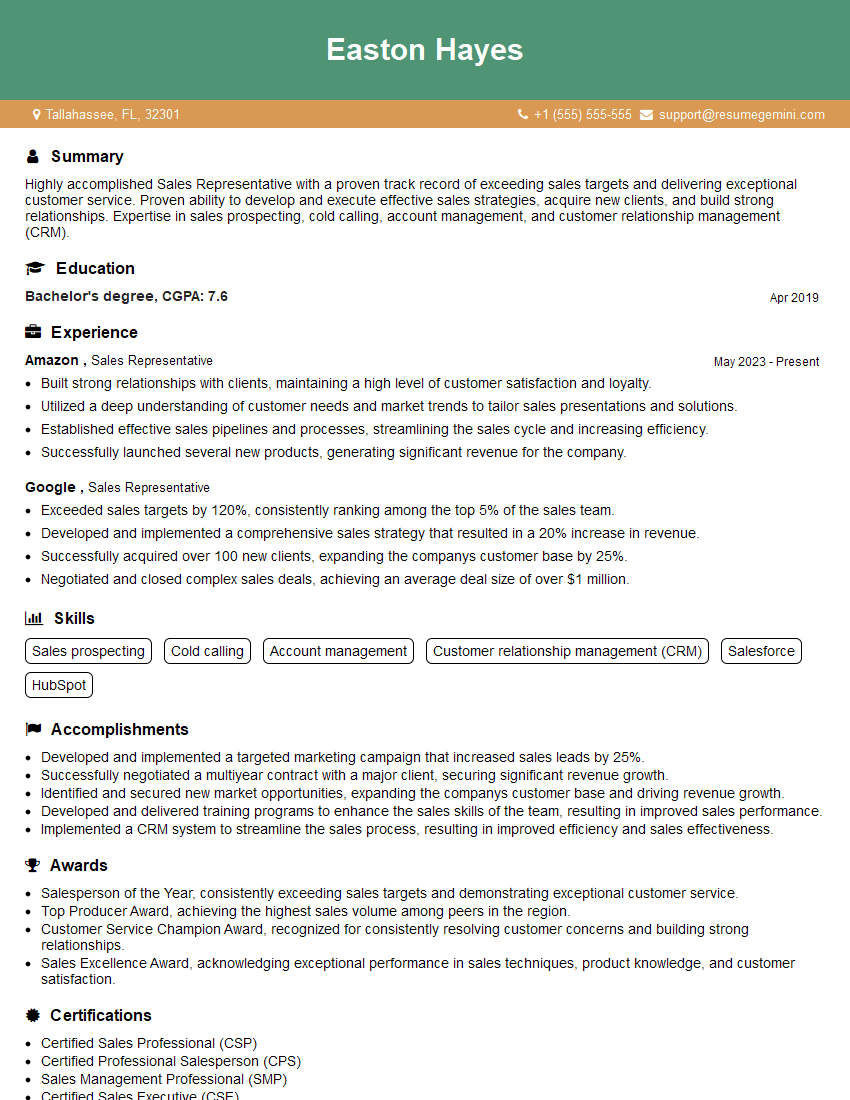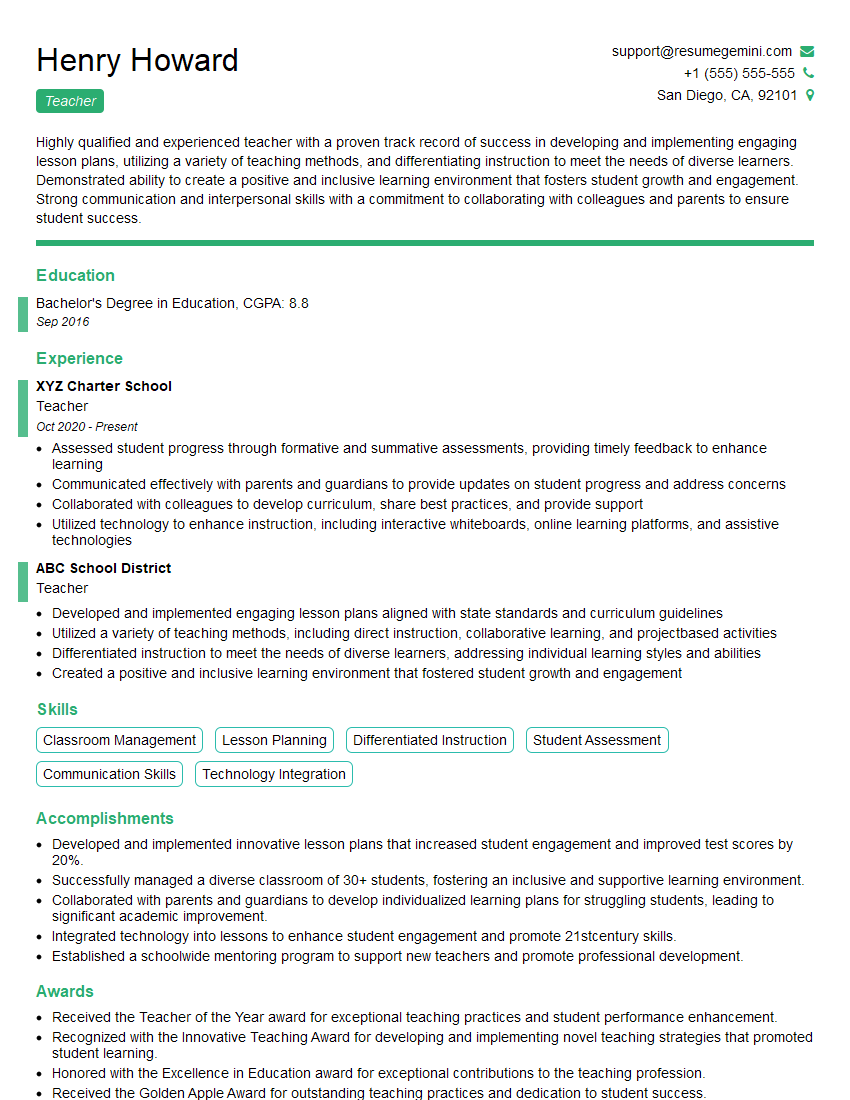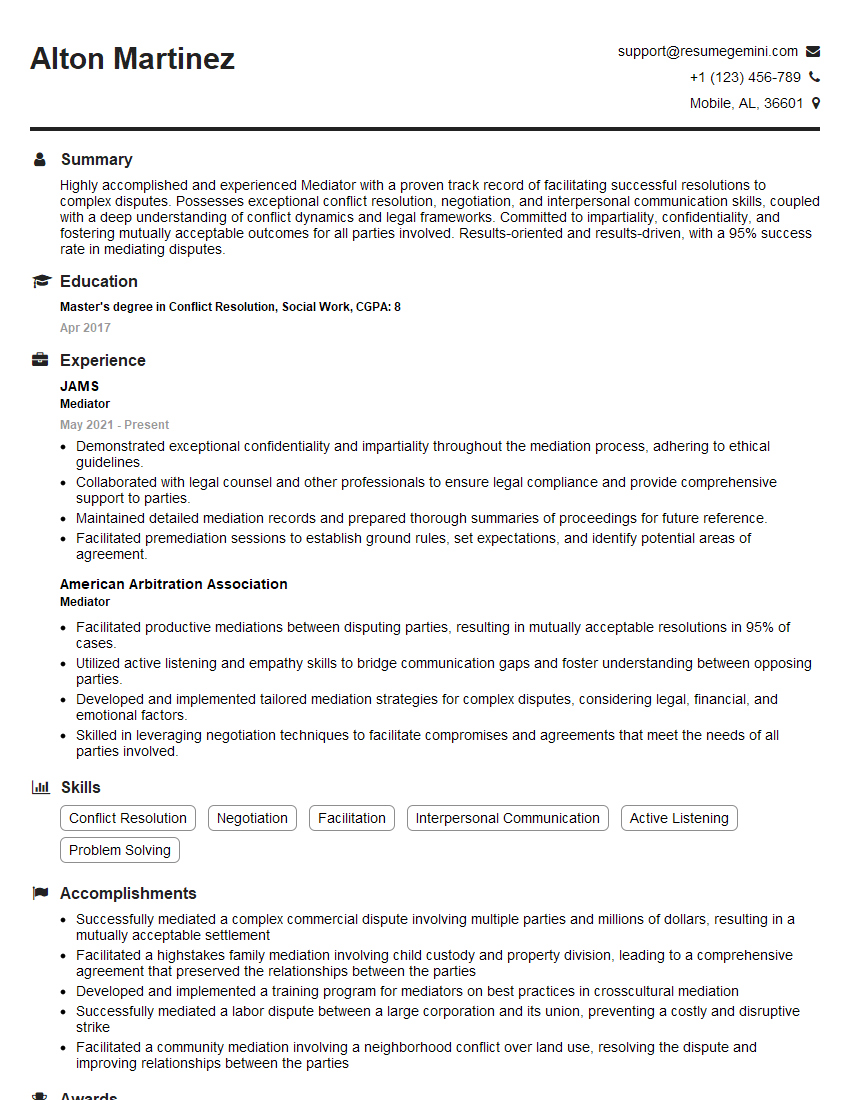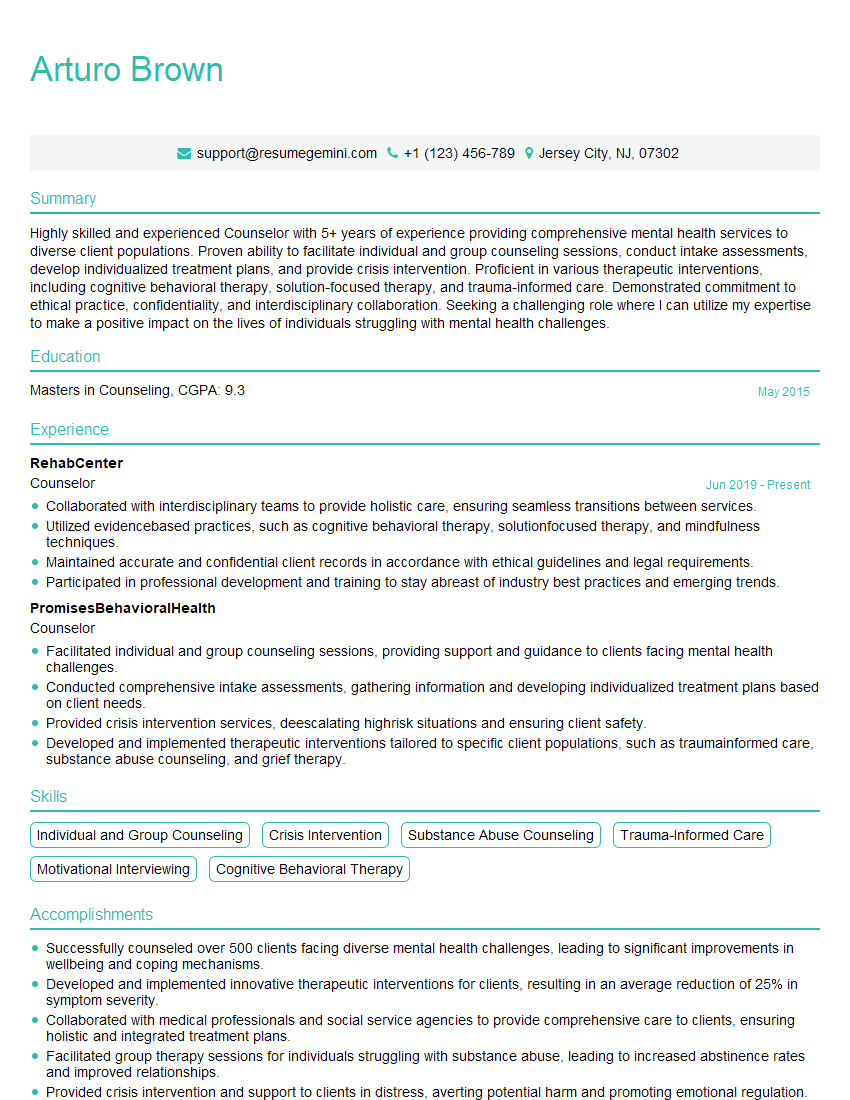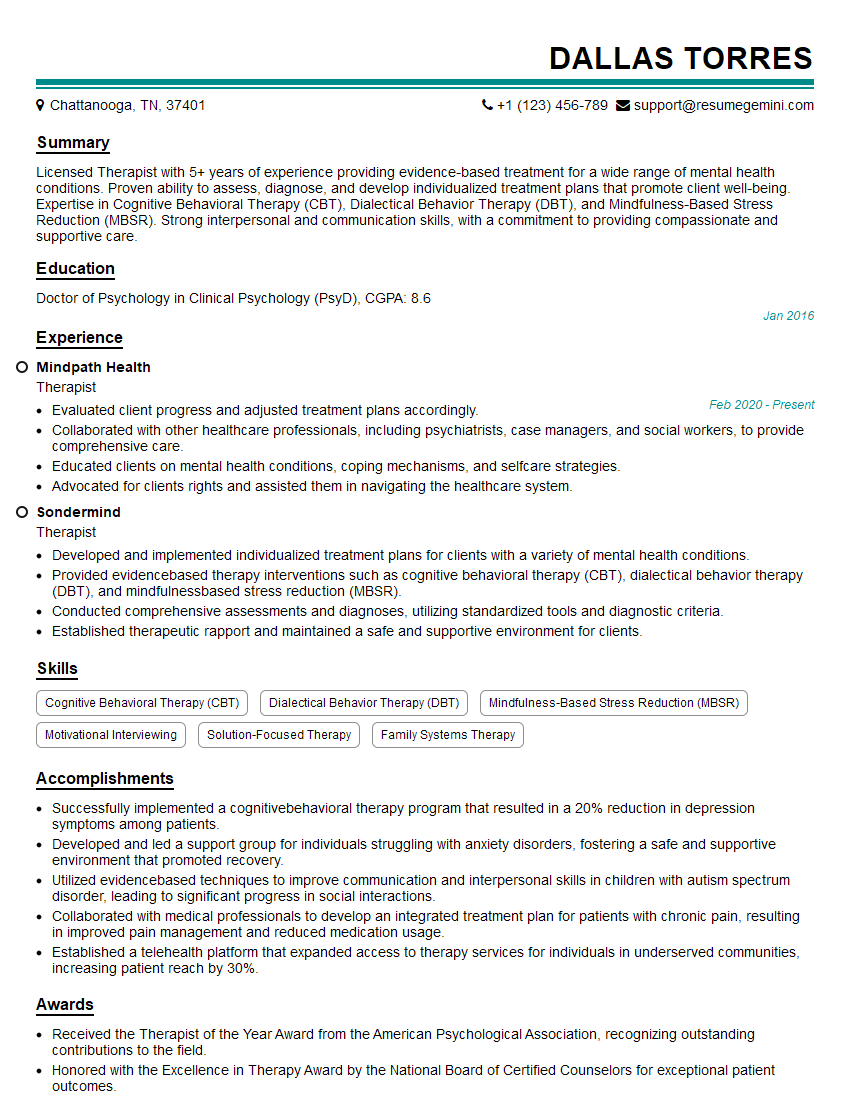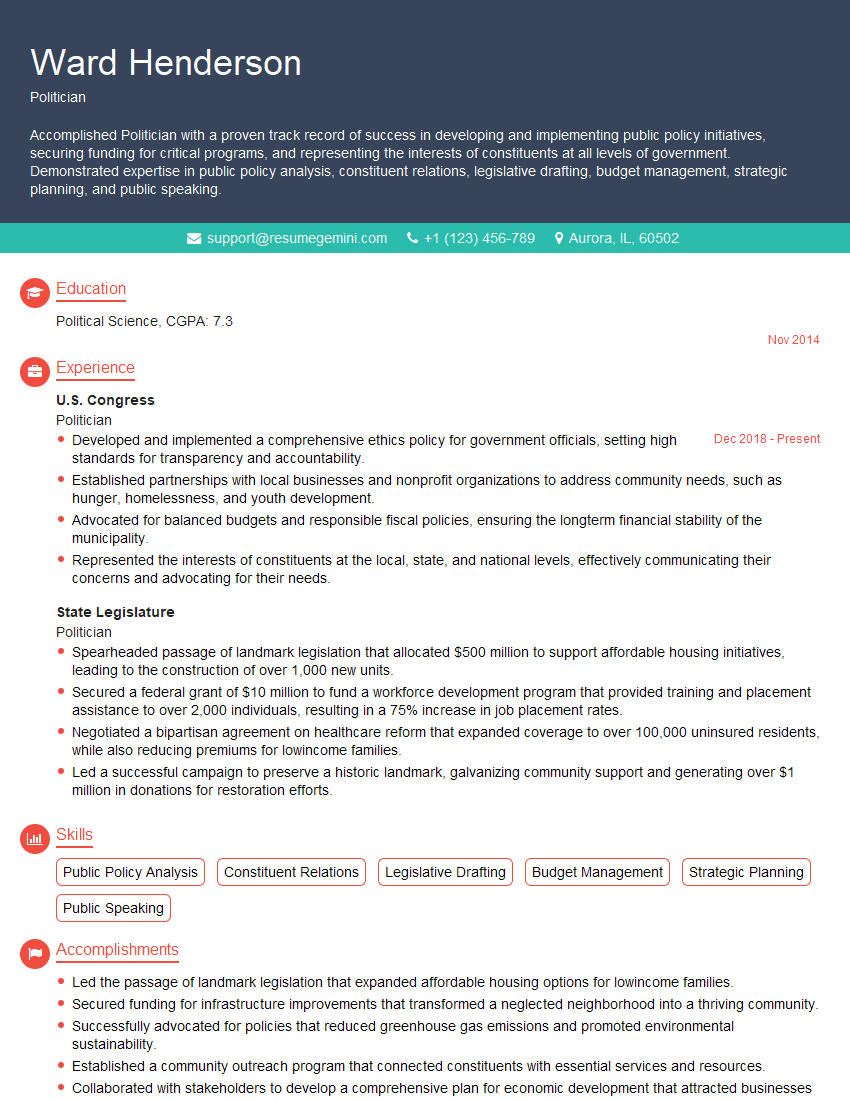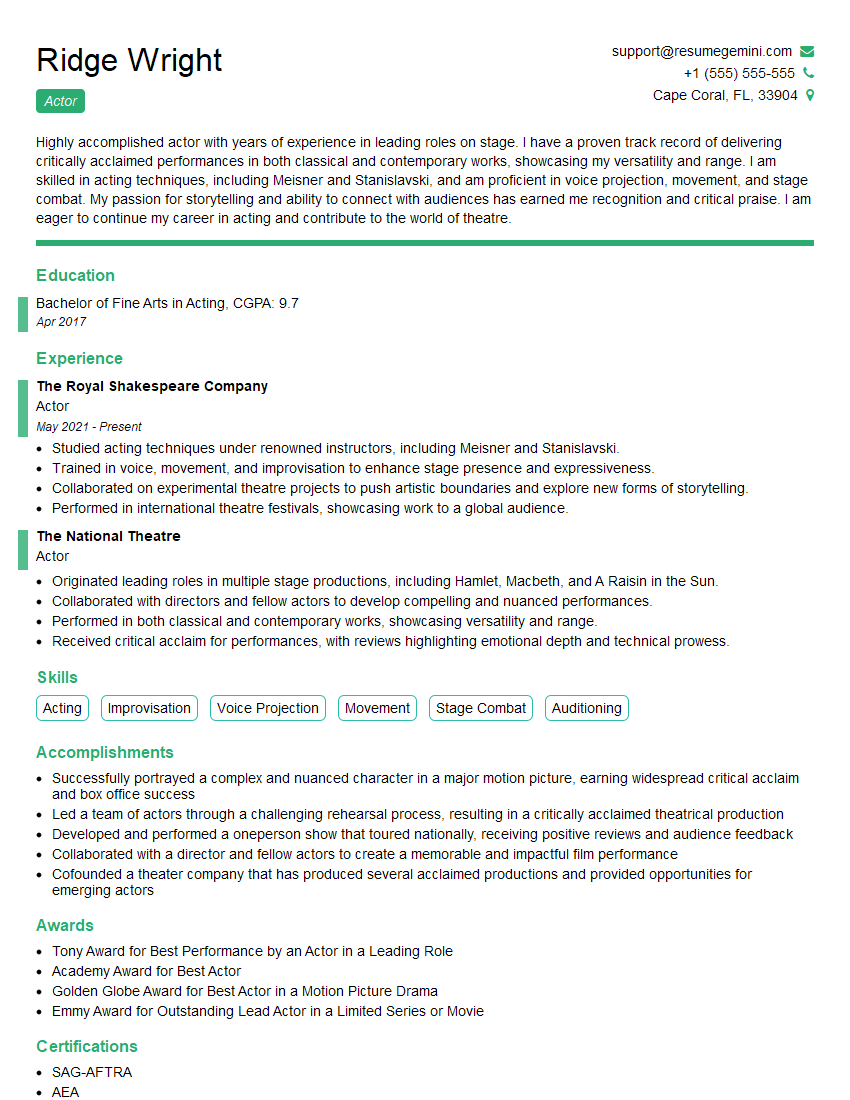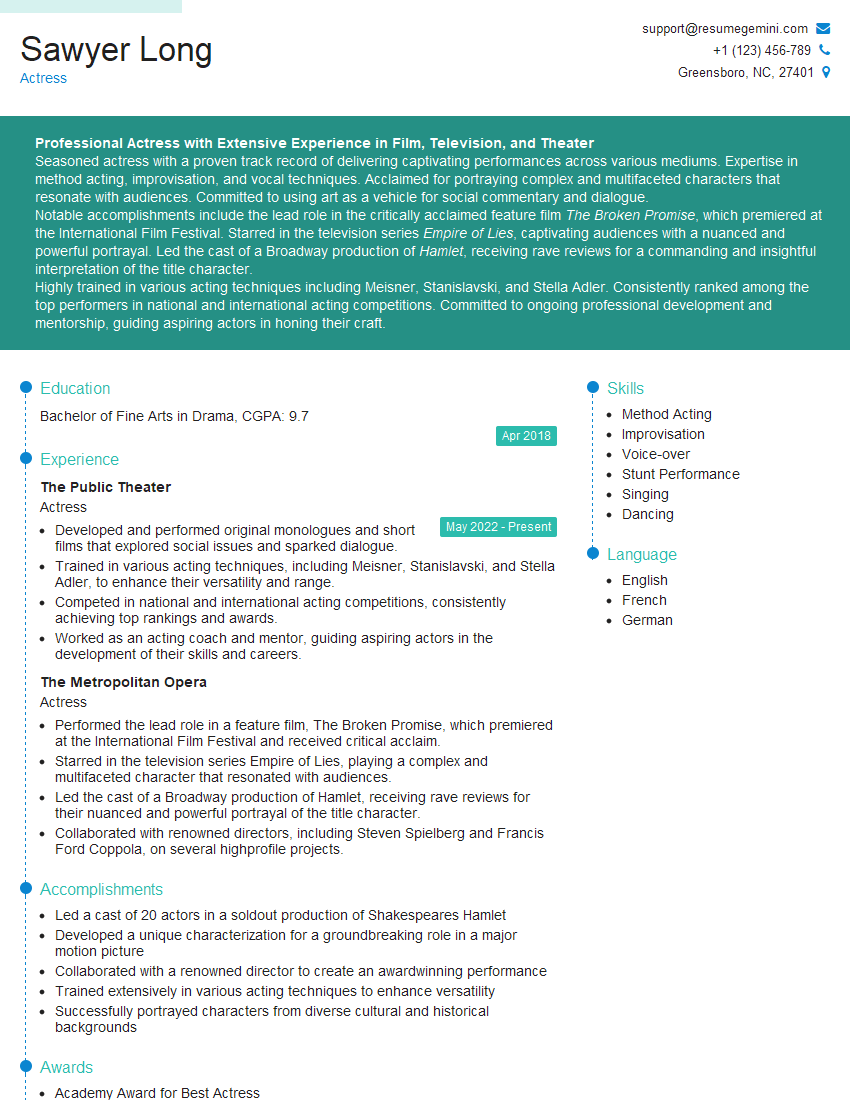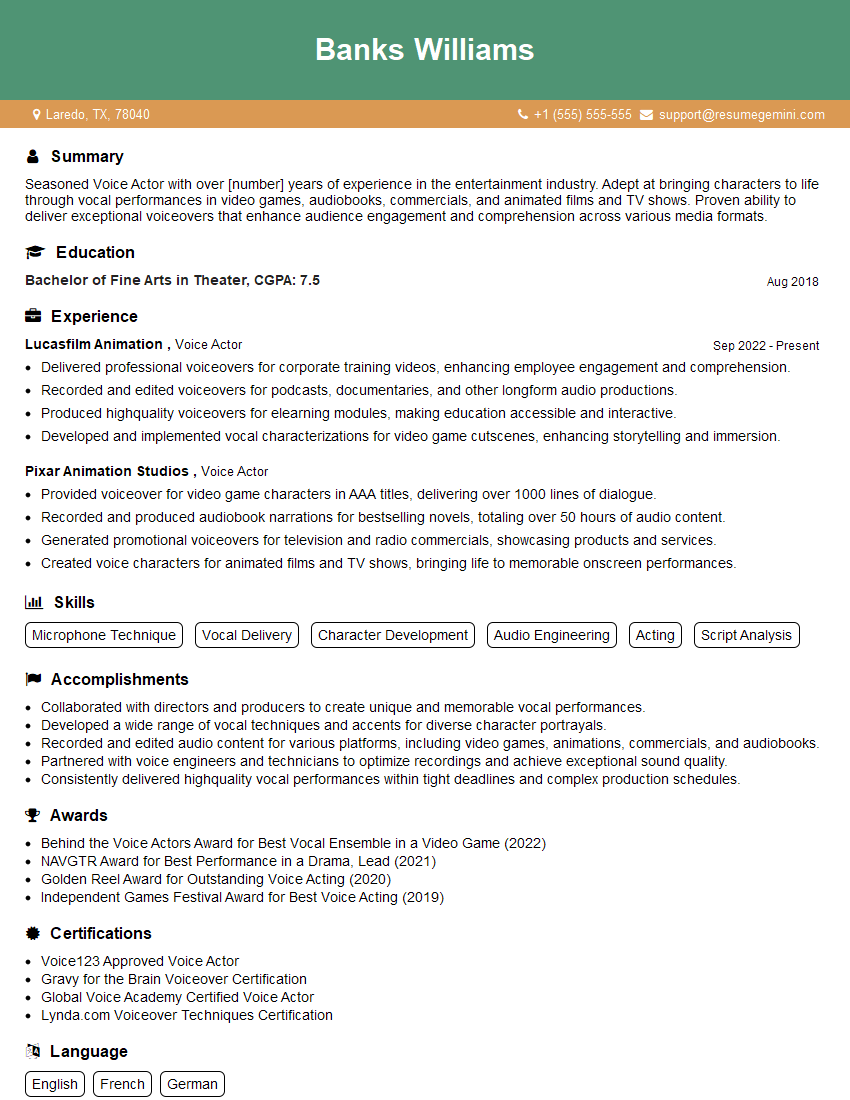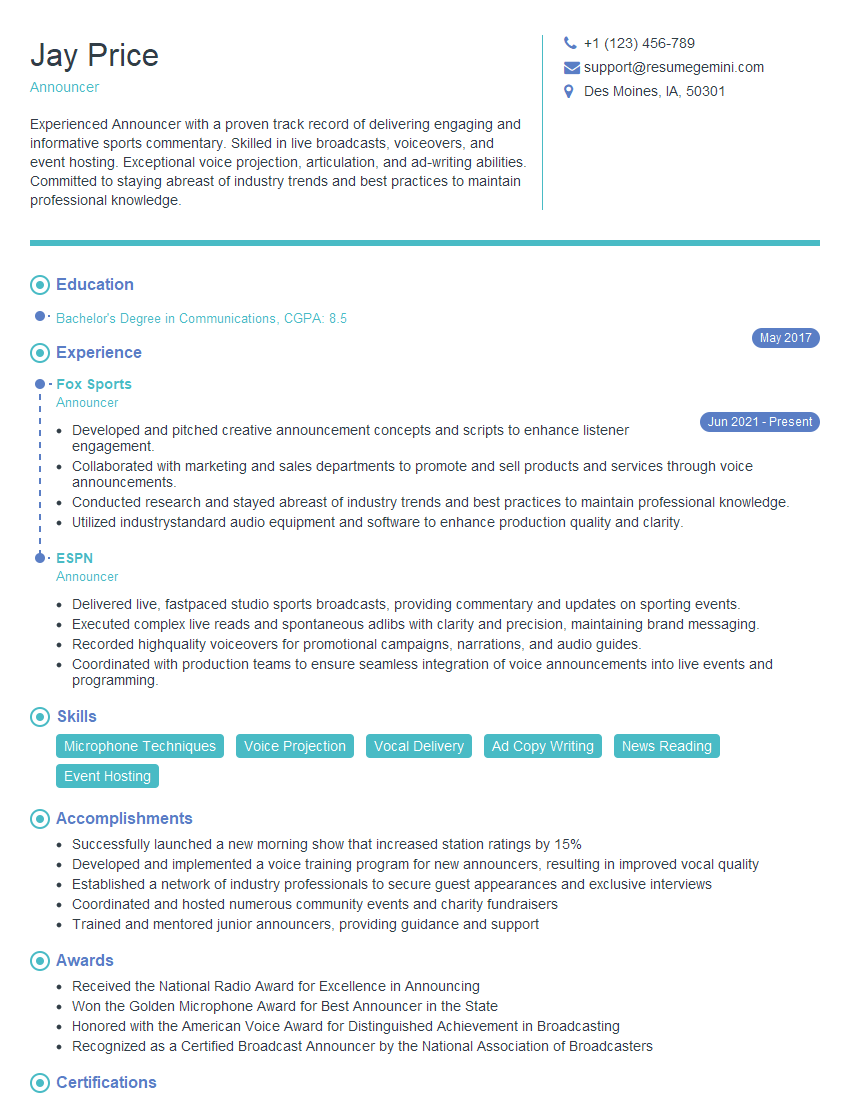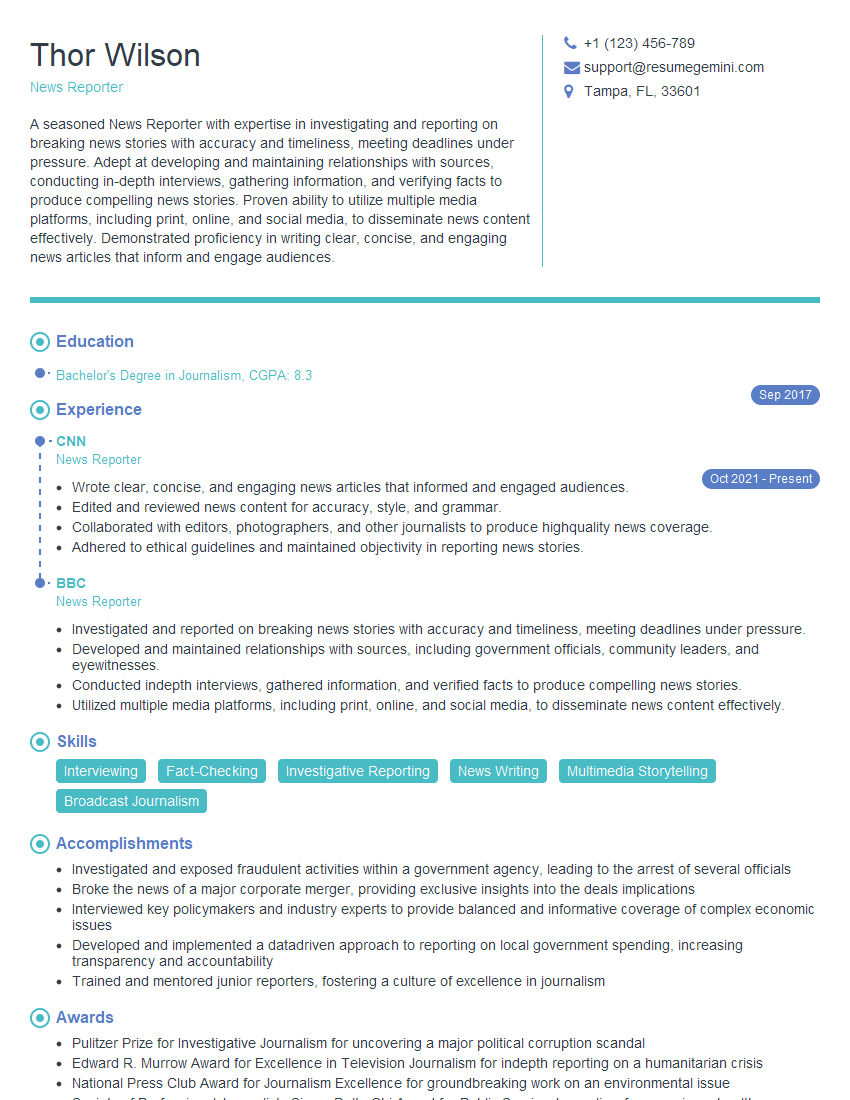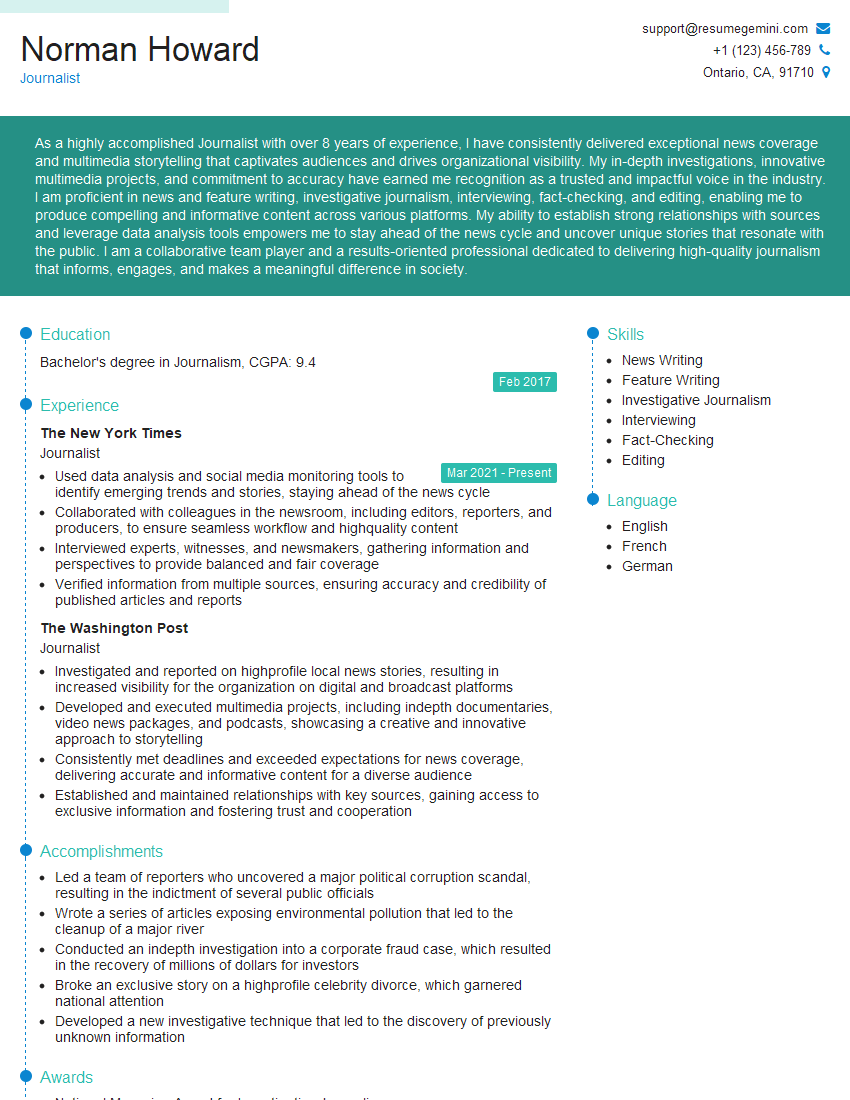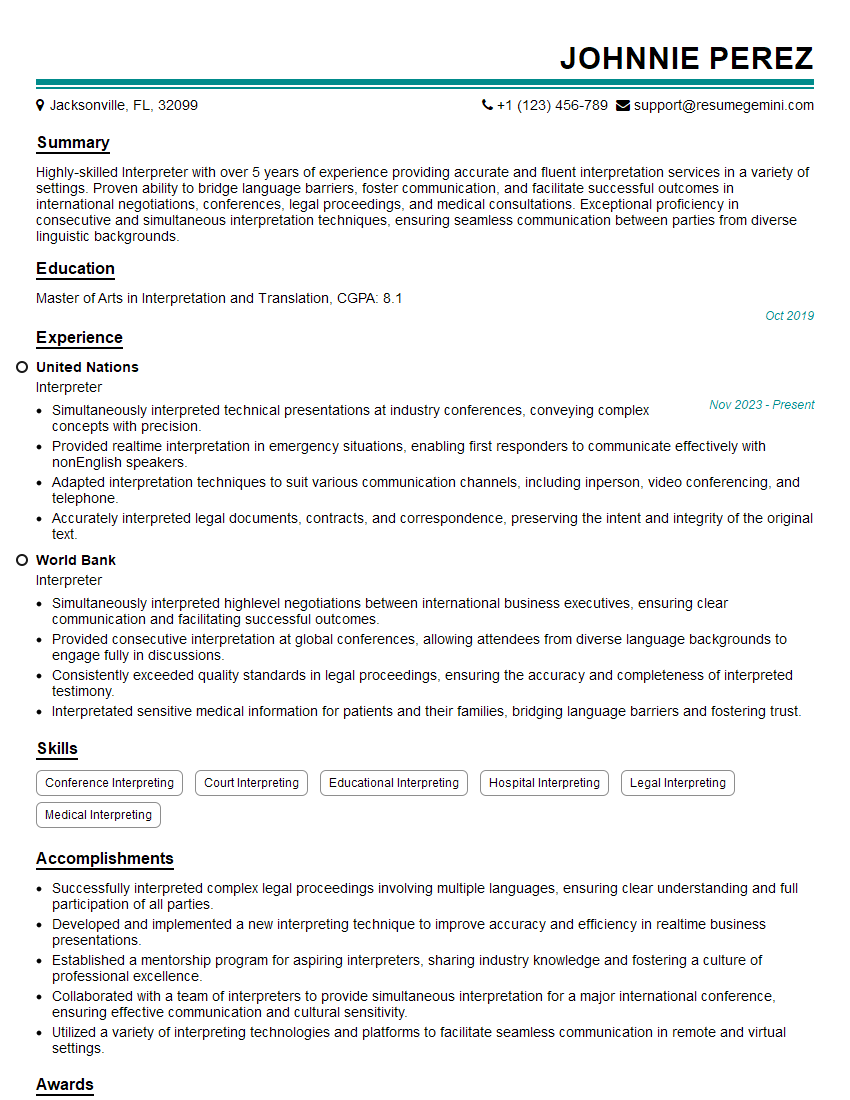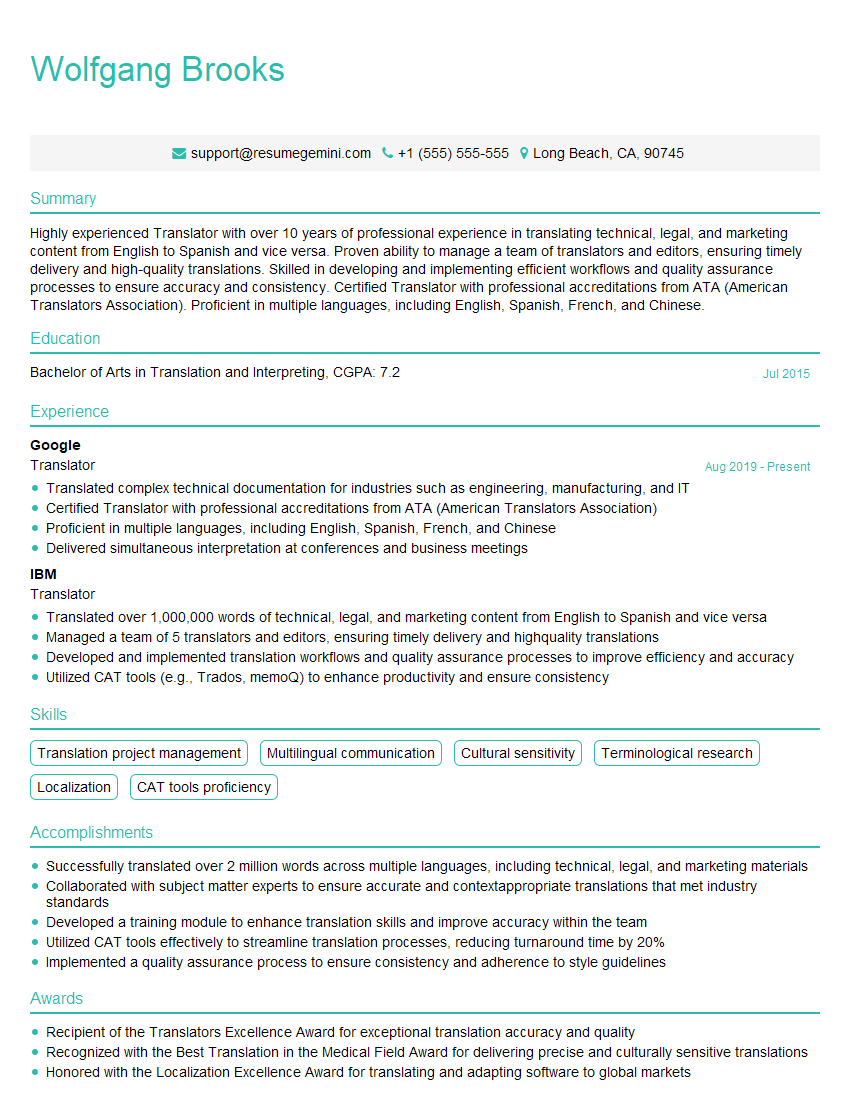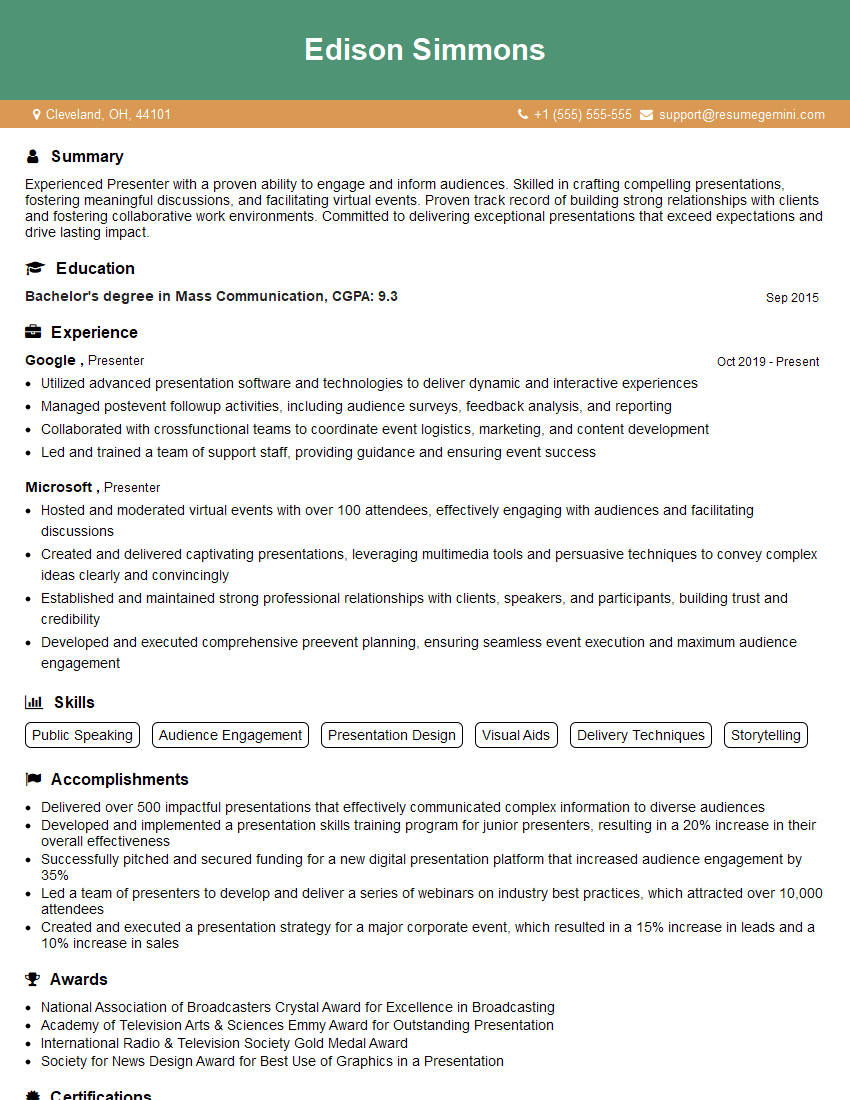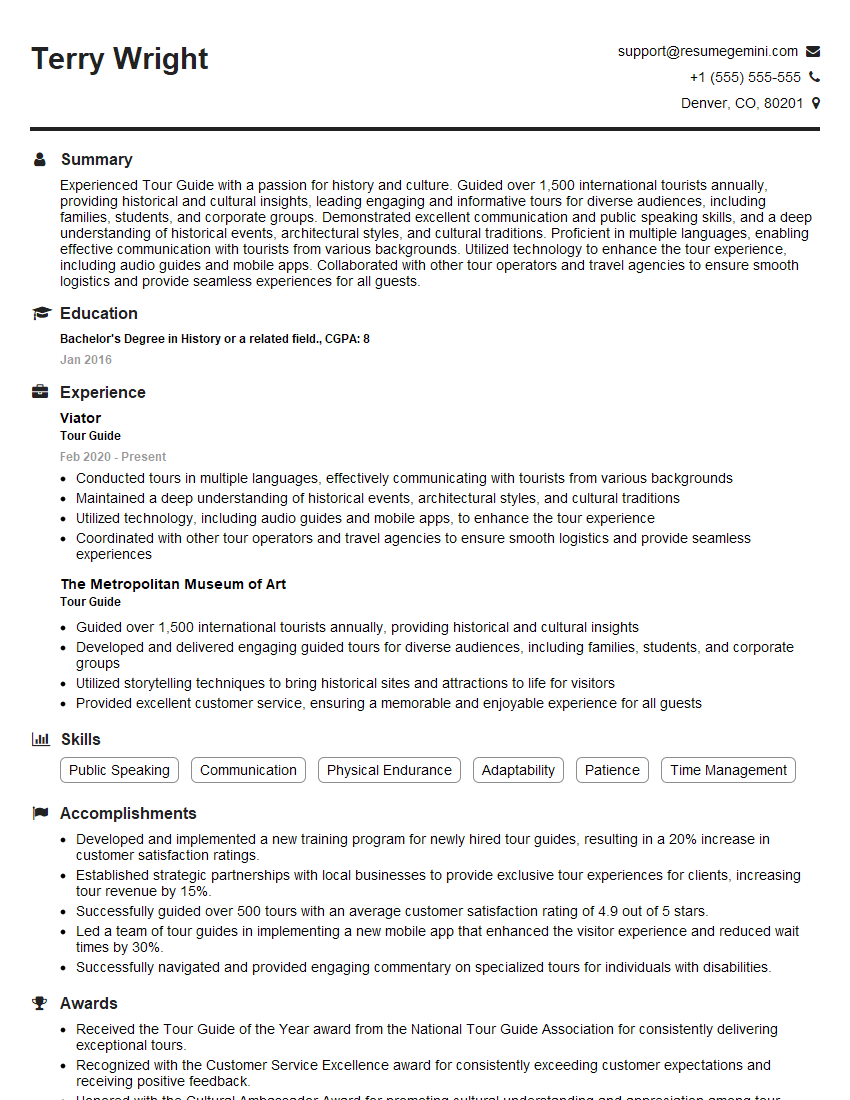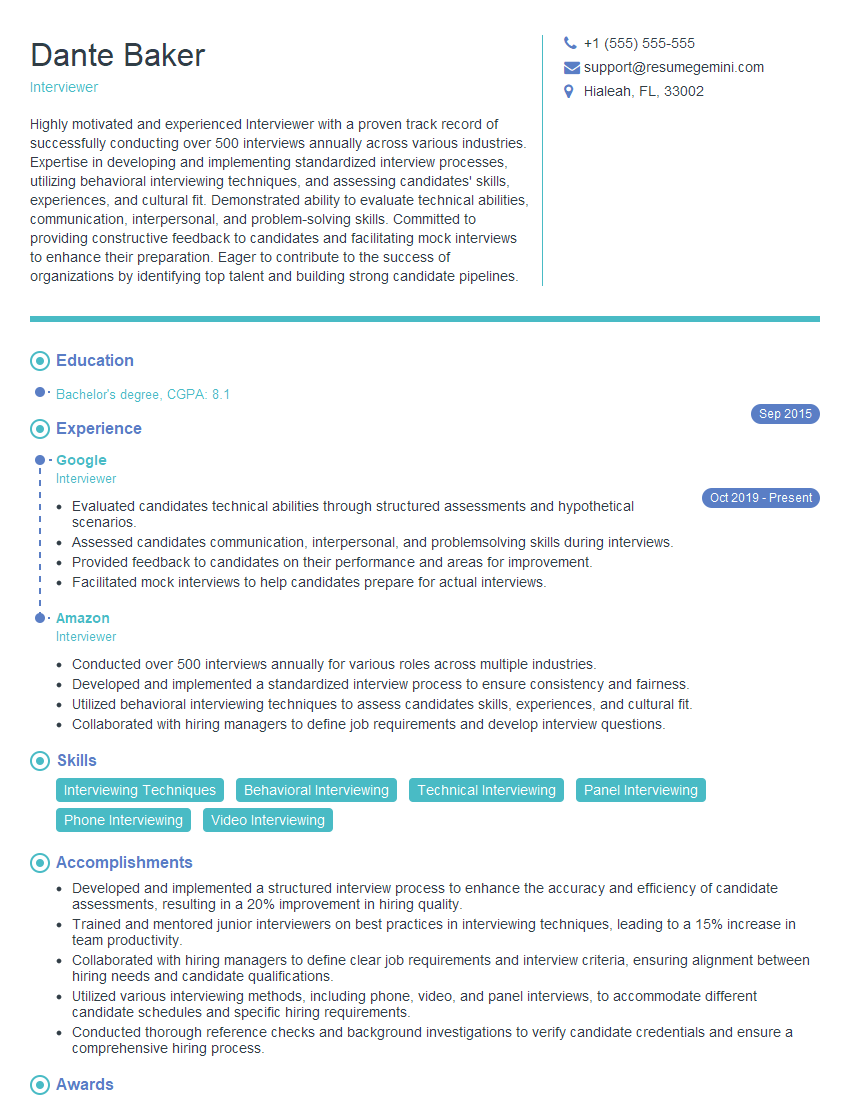Every successful interview starts with knowing what to expect. In this blog, we’ll take you through the top Dialogue Memorization interview questions, breaking them down with expert tips to help you deliver impactful answers. Step into your next interview fully prepared and ready to succeed.
Questions Asked in Dialogue Memorization Interview
Q 1. Describe your process for memorizing lines of dialogue.
My approach to memorizing dialogue is multifaceted and relies on a combination of techniques tailored to the specific material. It’s not just rote learning; it’s about understanding and internalizing the text.
- Active Reading & Understanding: I begin by thoroughly reading the script multiple times, focusing not just on the words but also on the subtext, character relationships, and overall narrative arc. I try to understand the *why* behind each line, not just the *what*.
- Chunking & Repetition: I break down the dialogue into smaller, manageable chunks. I then rehearse each chunk repeatedly, using different techniques like vocalizing, writing it out, or even moving around while saying the lines to engage different parts of my memory.
- Sensory Association: I associate each chunk with a visual image, a sound, or a feeling to aid recall. For example, if a line describes a specific setting, I’ll visualize that setting vividly in my mind.
- Contextualization & Emotional Connection: I connect the lines to the character’s emotional state and motivations. By embodying the character’s feelings, the lines become more meaningful and easier to remember.
- Performance Practice: Finally, I rehearse the entire scene, paying attention to pacing, intonation, and physicality. This helps cement the dialogue in my memory through active application.
For example, in memorizing a particularly poignant scene, I might visualize the setting, associate the character’s grief with a specific smell or sound, and focus on conveying that emotion truthfully during rehearsal.
Q 2. What techniques do you use to overcome forgetting lines during a performance?
Forgetting lines is a common fear, but manageable with the right strategies. My approach emphasizes preparedness and improvisation techniques.
- Preparation is Key: Thorough memorization, as described above, minimizes the risk of forgetting. This includes extra rehearsals, even beyond what feels comfortable.
- Use of Prompts: Subtle stage cues (a prop, a particular movement from another actor) can trigger memory. This isn’t about relying on cues, but about using them as helpful reminders.
- Improvisation Skills: Sometimes, a line may escape you. In such instances, I utilize my improvisation skills to cover the lapse seamlessly. It involves using the context of the scene, understanding the character’s personality, and speaking in character to bridge the gap.
- Don’t Panic: The audience is far less likely to notice a minor stumble than you might think. If a line slips, pause, take a breath, and continue. Confidence is contagious.
- Post-Performance Review: After the performance, I analyze areas where I stumbled and adjust my rehearsal strategy for future performances.
For instance, if I forget a line mid-scene, I might seamlessly improvise a related comment in character, buying myself time to recover the forgotten line or move the scene naturally forward.
Q 3. How do you manage memorizing large volumes of dialogue?
Memorizing vast amounts of dialogue requires a structured and organized approach. It’s crucial to break the task into manageable sections to avoid feeling overwhelmed.
- Divide and Conquer: Break the dialogue into smaller scenes or even individual characters’ lines. Focus on one section at a time, mastering it before moving on.
- Prioritize: Identify key scenes or crucial lines and prioritize them in your memorization process. These are often the scenes with the most emotional weight or pivotal plot points.
- Spaced Repetition: Review previously memorized sections regularly to prevent forgetting. This technique leverages the way our brains retain information over time.
- Record Yourself: Recording your rehearsals allows you to identify areas needing improvement and monitor your progress.
- Utilize Technology: Apps specifically designed for memorization can be beneficial in organizing and tracking progress.
Imagine a large play: I might break the script down by act, then scene, then character’s lines within each scene. Each section is reviewed regularly, with the most crucial lines receiving the most frequent attention.
Q 4. Explain your method for understanding character motivations and using them to enhance your dialogue delivery.
Understanding character motivations is paramount for believable dialogue delivery. It’s about more than just speaking the words; it’s about embodying the character’s inner world.
- Backstory Exploration: I delve into the character’s background, relationships, and desires. What drives them? What are their fears and aspirations? Understanding this provides context for their dialogue.
- Objective Analysis: I determine each character’s objective in each scene. What are they trying to achieve through their interactions with others? This informs their choices and dialogue.
- Emotional Mapping: I map the character’s emotional arc throughout the play. How do their feelings evolve in response to events and interactions? This guides my emotional performance.
- Relationship Dynamics: I carefully analyze the character’s relationships with other characters. How do these relationships influence their dialogue choices and tone?
- Subtextual Interpretation: I pay close attention to subtext—the unspoken meanings and emotions underlying the words. This adds depth and nuance to the performance.
For example, if my character is secretly jealous, I might subtly convey that emotion through my tone and body language, even if the dialogue doesn’t explicitly state it.
Q 5. How do you adapt your memorization technique based on different types of dialogue (e.g., comedic, dramatic, technical)?
My memorization techniques adapt based on the type of dialogue. Different styles demand different approaches.
- Comedic Dialogue: Comedic timing and delivery are crucial. Memorization involves understanding the rhythm and phrasing to maximize comedic impact. I might practice with a partner to refine timing and pacing.
- Dramatic Dialogue: Emotional depth and subtext are paramount. Memorization focuses on understanding the emotional arc and using vocal techniques to convey the intensity of the emotions involved. I’d focus on understanding the emotional beats and using different vocal tones and tempos to enhance the dramatic effect.
- Technical Dialogue: Accuracy and clarity are paramount. Memorization often involves breaking down the lines into smaller, easily digestible units and focusing on perfect pronunciation. Repetition is key here.
For a comedic scene with rapid-fire dialogue, I would focus on memorizing the lines in chunks, paying particular attention to the pauses and inflections for maximum comedic effect. For a technical scene involving complex terminology, I would focus on accurate pronunciation and a clear understanding of the meaning of each term.
Q 6. How do you handle changes or additions to a script after it has been memorized?
Script changes are inevitable. My approach focuses on adaptability and efficient re-memorization.
- Identify the Changes: Carefully review the changes and mark them clearly in my script.
- Contextual Integration: Understand how the changes impact the surrounding dialogue and the overall narrative.
- Incremental Rehearsal: Focus on memorizing only the changed sections, integrating them seamlessly with the previously memorized parts.
- Rehearse with the Changes: Practice the entire scene multiple times with the updated script.
- Seek Clarification: If I am unsure about any changes, I consult the director or scriptwriter to clarify any ambiguities.
For example, if a few lines are added mid-scene, I would focus on memorizing those lines and rehearsing the entire scene to ensure a smooth flow and natural delivery.
Q 7. How do you maintain accuracy while delivering memorized dialogue?
Maintaining accuracy while delivering memorized dialogue is a matter of diligent preparation and performance strategies.
- Careful Rehearsal: Pay close attention to detail during rehearsals. This includes pronunciation, pacing, and intonation.
- Regular Review: Regularly review the lines to reinforce memory and ensure accuracy.
- Record and Listen: Recording myself during rehearsal allows me to detect and correct any errors in pronunciation or delivery.
- Performance Practice: Practice delivering the dialogue under conditions similar to the actual performance. This helps build confidence and accuracy.
- Trust Your Memory: Believe in your preparation. While nerves can impact performance, trusting your memory is crucial for confident delivery.
For example, I might record myself rehearsing a scene, then listen back to identify any slips of the tongue or moments where my pronunciation wasn’t clear. I would then practice those specific sections until I felt confident in their delivery.
Q 8. Discuss the importance of emotional connection to the dialogue in relation to memorization.
Emotional connection is paramount to effective dialogue memorization. When you genuinely connect with the emotions of your character, the lines become less about rote memorization and more about embodying the character’s experience. This creates a deeper understanding and makes recalling the dialogue far easier and more natural.
For example, if your character is delivering a heartbreaking monologue, understanding the depth of their grief will inform your delivery and naturally guide your memory. You’ll remember the dialogue because you feel it. Conversely, a scene filled with playful banter will require you to tap into the character’s lightheartedness. The more authentic your emotional connection, the more effortlessly you’ll remember the dialogue.
In practice, I utilize various techniques like method acting exercises, emotional recall, and deep immersion in the character’s backstory to foster this connection. This approach not only aids memorization but also elevates the overall performance.
Q 9. Explain how you would prioritize memorizing dialogue with varying levels of importance within a larger script.
Prioritizing dialogue memorization within a larger script hinges on understanding the dramatic arc and the significance of each scene. I typically start by identifying the ‘key scenes’ – those pivotal moments driving the plot, revealing character development, or setting the tone. These scenes usually contain the most crucial dialogue and warrant the highest priority.
Next, I’ll focus on the dialogue within these key scenes, memorizing the most impactful lines first. This allows me to build a strong foundation. After mastering the key scenes, I move on to scenes with secondary importance, working my way through the script in descending order of significance. This approach minimizes overwhelm and allows for a systematic and efficient memorization process. Think of it like building a house – you start with the foundation and supporting structures before adding details.
Q 10. How do you handle stage fright or performance anxiety when reciting memorized dialogue?
Stage fright is a common experience, even for seasoned actors. My approach involves a multi-pronged strategy. Firstly, thorough preparation is key. The more comfortable I am with the material, the less anxious I become. This includes not just memorizing the lines but also understanding the subtext, the character’s motivations, and the overall context of the scene.
Secondly, I engage in relaxation techniques like deep breathing exercises and mindfulness practices before a performance. This helps calm my nerves and focus my energy. Thirdly, I view stage fright not as an enemy but as a source of adrenaline, which can actually enhance my performance if channeled correctly. I transform the anxiety into excitement and focus it on delivering an engaging performance.
Finally, I always rehearse in environments similar to the performance space, gradually increasing the level of simulated pressure. This helps build confidence and reduces the element of surprise during the actual performance.
Q 11. How do you incorporate physicality and movement into your dialogue memorization and delivery?
Physicality and movement are integral to my approach. They’re not mere additions but essential elements that deepen the emotional resonance of the dialogue and enhance memorization. I start by analyzing the script for clues – the character’s emotional state, their relationship with other characters, and the setting of the scene.
For instance, a character delivering a passionate speech might use expansive gestures, while a character conveying subtle deception might employ more restrained movements. I use blocking (pre-planned movements on stage) not only to enhance the performance but also to create physical ‘anchors’ for specific lines or sections of dialogue. These physical cues serve as memory triggers, making it easier to recall lines in the correct sequence.
I often work with movement coaches to explore different physical approaches and refine the choreography of my performance, ensuring a seamless integration of movement and dialogue.
Q 12. Describe your approach to working with a script that requires dialect or accent work.
Dialect or accent work requires a dedicated approach. My process starts with extensive listening and recording. I gather as many authentic audio samples as possible and immerse myself in the sound, rhythm, and intonation of the dialect. I then break down the pronunciation of individual sounds and words, focusing on the nuances of the accent.
I often work with dialect coaches to ensure accuracy and to identify areas requiring improvement. They provide valuable feedback and help refine my pronunciation and intonation. I practice regularly, incorporating the dialect into my everyday conversation as much as possible. This helps internalize the sound patterns and allows for a more natural delivery during the performance.
It’s crucial to avoid stereotypes and caricature; understanding the cultural context of the dialect is essential for a respectful and authentic portrayal.
Q 13. How do you use mnemonic devices to aid in dialogue memorization?
Mnemonic devices are incredibly helpful. I use a variety of techniques, including creating visual imagery, associating lines with personal memories, and using acronyms or rhymes. For instance, if a line contains specific objects, I’ll create a vivid mental image involving those objects, associating them with the line.
If the dialogue describes a series of actions, I create a chain of images, each linked to a specific line. Rhymes and acronyms can help condense large chunks of dialogue into easily memorable units. For example, if I have four lines starting with ‘I’, ‘You’, ‘He’, ‘She’, I might create an acronym like ‘IYHS’ to remember the order.
The key is to create unique and personalized associations that resonate with my own memory style. What works for one person might not work for another, so experimentation is vital.
Q 14. What strategies do you employ to ensure your memorization remains consistent over rehearsals?
Maintaining consistency over rehearsals is critical. My strategy involves regular, spaced repetition of the dialogue. I avoid cramming and instead practice the material in short bursts over several days or weeks, allowing for adequate time for the information to consolidate in my memory.
I also utilize techniques like run-throughs with other actors, recording myself during rehearsals, and reviewing the script regularly. This helps identify areas where my memorization falters and provides opportunities for improvement. Moreover, incorporating the dialogue into improvisational exercises helps build fluency and confidence.
Consistent review and practice, combined with varied rehearsal techniques, ensures that my memorization remains solid and my performance continues to improve throughout the rehearsal process.
Q 15. How do you use subtext and context to enhance your understanding and delivery of memorized dialogue?
Subtext and context are crucial for bringing memorized dialogue to life. Subtext refers to the unspoken meaning or emotion behind the words, while context encompasses the situation, relationships, and overall narrative. Understanding these elements allows for a nuanced and believable performance.
For instance, a line like ‘I’m fine’ can have many meanings depending on subtext and context. Delivered flatly, it might indicate genuine indifference. However, delivered with a trembling voice and averted gaze, it might suggest hidden pain and distress. The context of a recent argument with a loved one further enhances the impact of the seemingly simple phrase.
My process involves meticulously analyzing the script. I identify the emotional arc of each scene and the character’s motivations. I consider their relationship with other characters and how past events inform their present actions. This deep understanding helps me imbue the dialogue with the appropriate subtext and emotional weight, ensuring a more authentic and compelling performance.
Career Expert Tips:
- Ace those interviews! Prepare effectively by reviewing the Top 50 Most Common Interview Questions on ResumeGemini.
- Navigate your job search with confidence! Explore a wide range of Career Tips on ResumeGemini. Learn about common challenges and recommendations to overcome them.
- Craft the perfect resume! Master the Art of Resume Writing with ResumeGemini’s guide. Showcase your unique qualifications and achievements effectively.
- Don’t miss out on holiday savings! Build your dream resume with ResumeGemini’s ATS optimized templates.
Q 16. How would you handle a situation where you forget a line during a live performance?
Forgetting a line is a common fear, but it’s manageable. The key is to remain calm and resourceful. First, I would try to subtly recover by using the other actor’s line as a cue to trigger my memory. If that doesn’t work, I’ll improvise a brief moment, keeping my character’s personality and the flow of the scene in mind. This might involve a beat of silence, a non-verbal reaction, or a short phrase that buys time while I discreetly glance at my script (if permitted).
The important thing is to avoid panicking and drawing attention to the mistake. A confident, smooth recovery is better than a flustered attempt to recite the line verbatim. I’ve found that practicing the scene multiple times under pressure, even simulating forgetting a line, significantly improves my ability to react smoothly during a live performance.
Q 17. Explain your process for breaking down a script into manageable chunks for memorization.
My approach to script breakdown is methodical. I begin by reading the entire script for comprehension, paying close attention to plot, character relationships, and overall tone. Then, I break it down into smaller, manageable scenes. Within each scene, I further divide the dialogue into logical chunks based on thought patterns and emotional shifts.
I often use index cards or a digital document to organize these chunks, focusing on key phrases and emotional beats. This method allows for focused memorization and easy retrieval. I might also assign different colors or symbols to highlight crucial emotional cues or transitions, aiding in recall and reinforcing the character’s emotional journey. I find this step-by-step approach ensures efficiency and thorough understanding of the material.
Q 18. What are some common pitfalls to avoid during dialogue memorization?
Common pitfalls in dialogue memorization include rote learning without understanding, over-relying on prompts, and neglecting character development. Rote memorization leads to a stiff, unnatural delivery. Over-reliance on prompts can create a dependency that hinders spontaneous performance.
Neglecting character development results in a bland, unengaging portrayal. I avoid these pitfalls by focusing on understanding the character’s motivations, emotions, and relationships. I also employ active recall techniques, like testing myself regularly without relying heavily on the script. Finally, I incorporate improvisation exercises to enhance flexibility and naturalness in my delivery.
Q 19. How do you balance memorization with character development and improvisation?
Balancing memorization with character development and improvisation is a crucial aspect of a nuanced performance. Memorization provides the foundation, but character development and improvisation add depth and authenticity.
My approach involves developing a rich understanding of the character before committing the dialogue to memory. This includes exploring their backstory, personality traits, and relationships. During rehearsals, I use improvisation to explore different interpretations of the dialogue, experimenting with different tones, pauses, and physical gestures, keeping within the character’s emotional arc. This helps to make the memorized lines feel natural and spontaneous.
Q 20. Discuss the importance of repetition in the memorization process.
Repetition is the cornerstone of effective memorization. It’s not about mindlessly repeating lines but rather about engaging with the material at different levels. I utilize spaced repetition, reviewing the material at increasing intervals to reinforce memory consolidation.
I also vary my repetition methods. For example, I might recite lines aloud, whisper them to myself, or write them out. This multi-sensory approach strengthens memory retention. Each repetition isn’t merely a rote exercise; it’s an opportunity to refine the delivery, explore the subtext, and deepen my understanding of the character.
Q 21. How do you utilize rehearsal time effectively for dialogue memorization?
Effective rehearsal time is about more than just repeating lines; it’s about refining the performance. I start by working on individual scenes, focusing on understanding the character’s emotional journey and finding the right tone and rhythm for each line. Once I’ve memorized the scenes, I work on transitions between scenes and the overall flow of the dialogue.
I also use rehearsal time to experiment with different acting choices, such as body language, facial expressions, and vocal inflections. I often record myself during rehearsal to identify areas needing improvement and to refine my delivery. Collaboration with the director and fellow actors is also vital for feedback and refining the overall performance.
Q 22. How do you ensure your delivery of memorized dialogue is engaging and natural?
Delivering memorized dialogue naturally requires more than just recalling words; it demands embodying the character and their emotional arc. Think of it like becoming a chameleon – you must adapt your vocal tone, body language, and even breathing to match the character’s personality and situation.
Subtext and Intention: Instead of focusing solely on the words, understand the underlying meaning and intention behind each line. What is the character trying to achieve? What are their unspoken feelings? This will inform your delivery and make it feel genuine.
Vocal Variety: Avoid a monotone delivery. Vary your pace, pitch, and volume to reflect the emotional intensity and rhythm of the dialogue. Pauses can be incredibly powerful, creating tension or allowing for reflection.
Physicality: Incorporate subtle physical actions that reinforce the dialogue. Gestures, facial expressions, and posture should complement the words, enhancing the overall impact. Avoid overacting; less is often more.
Practice in Context: Rehearse the dialogue not just in isolation but within the larger context of the scene. This helps you understand the flow and react organically to your scene partners.
For example, if I’m playing a character who is secretly angry, I might deliver lines that appear calm on the surface, but use a slightly faster pace, a lower volume, or a controlled clenching of my jaw to subtly convey the hidden emotion.
Q 23. Describe a time you successfully memorized a challenging piece of dialogue; what was your strategy?
Memorizing Lady Macbeth’s sleepwalking scene from Shakespeare’s Macbeth was a particularly challenging experience. The poetic language, complex imagery, and emotional depth required a multi-faceted approach.
Breaking it Down: I didn’t try to memorize it all at once. I broke the scene into smaller, manageable chunks, focusing on understanding the meaning of each section before moving on. I used color-coded highlighting to mark key phrases, emotional shifts and pauses.
Active Recall and Spaced Repetition: I practiced recalling each chunk without looking at the script. Then, I used spaced repetition – reviewing the material at increasing intervals – to reinforce memory over time.
Movement and Physicality: Since the scene is physically and emotionally demanding, I incorporated movement and physical gestures into my rehearsal. This made the lines feel more embodied and less like rote learning.
Recording and Review: I recorded myself reciting the lines and listened back critically, identifying areas needing improvement in pronunciation, pacing, and emotional expression.
The success came from understanding the character’s inner turmoil and using that understanding to guide my memorization and performance, rather than just relying on rote memorization.
Q 24. What role does understanding the overall narrative play in your dialogue memorization process?
Understanding the overall narrative is paramount. It’s not just about remembering lines; it’s about understanding the character’s motivations, relationships, and the overall plot arc. This allows for a more nuanced and believable performance.
Think of it as assembling a puzzle. Each line of dialogue is a piece. Without knowing the overall picture, you can’t properly place those pieces and the performance will feel disjointed. Understanding the character’s journey and their place within the larger story gives the dialogue context and purpose. This understanding helps to create a more believable and engaging portrayal. For example, if my character is betraying a friend, knowing the background of their friendship and the reasons behind the betrayal informs every word, every expression, and every action.
Q 25. How do you incorporate feedback to improve your memorization and delivery of dialogue?
Feedback is crucial. I actively seek feedback from directors, coaches, and fellow actors, focusing both on my memorization and delivery. This might include comments on pacing, clarity, emotional impact, and even physicality. I document feedback systematically and use it to refine my approach.
Specific Feedback: Instead of general comments, I look for specific suggestions. For example, “Your pace is too fast in this section,” or “Try conveying more vulnerability in this line” are incredibly helpful.
Re-evaluation and Adjustment: After receiving feedback, I re-evaluate my performance, identify areas for improvement, and adjust my memorization and delivery techniques accordingly.
Self-Reflection: I also use self-recording and review to critically analyze my own performance and identify potential areas for improvement independently of external feedback.
This iterative process ensures continuous growth and improvement in both my memorization and performance skills.
Q 26. How do you adapt your memorization strategies for different performance styles?
Different performance styles require adaptations in memorization strategies. For example, a naturalistic performance style demands a deeper understanding of subtext and a more intuitive delivery, while a highly stylized performance might prioritize precise rhythm and diction.
Naturalistic Style: Focus on understanding the emotional core and delivering the lines spontaneously.
Stylized Performance: Prioritize rhythmic precision, vocal inflection, and controlled gestures. This might involve meticulous attention to specific pronunciation and pacing.
Commedia dell’Arte: Memorization would focus on a framework of the scene, allowing for improvisation within established comedic beats.
My approach always adapts to the director’s vision and the overall style of the production. The fundamental goal remains to deliver the dialogue convincingly, regardless of the stylistic choices.
Q 27. Explain the difference between rote memorization and understanding-based memorization for dialogue.
Rote memorization involves simply repeating lines until they are committed to memory, often without a deep understanding of the context or meaning. Understanding-based memorization, on the other hand, prioritizes comprehending the dialogue’s significance, subtext, and relationship to the larger narrative. It leverages comprehension to enhance memory.
Rote memorization is like memorizing a phone number – you can recite it without understanding its purpose. Understanding-based memorization is like understanding a story – you remember it more easily because you grasp the narrative’s flow and the characters’ motivations. Understanding-based memorization is vastly superior for dialogue, as it results in a more nuanced and believable performance.
Q 28. How do you handle memorizing dialogue with technical jargon or specialized vocabulary?
Memorizing dialogue with technical jargon or specialized vocabulary requires a multi-step approach. It’s not just about memorizing the words; it’s about understanding their meaning and proper pronunciation.
Research and Understanding: Thoroughly research the meaning of each term. Understanding the context helps with pronunciation and ensures accurate delivery.
Pronunciation Guidance: Use online resources or consult experts to ensure accurate pronunciation of technical terms. Mispronunciation can undermine credibility.
Chunking and Association: Break down complex technical passages into smaller, manageable chunks. Use association techniques to link terms to their meanings, using mnemonics if necessary.
Contextualization: Practice the dialogue within the scene’s context, ensuring the technical terms are integrated seamlessly into the flow of conversation.
For example, when memorizing dialogue related to medical procedures, I would research the meaning of each term, practice its pronunciation, and ensure that I understand how it fits within the dialogue’s narrative. This approach ensures that the delivery is both accurate and believable.
Key Topics to Learn for Dialogue Memorization Interview
- Understanding the Script: Analyze the dialogue’s context, characters, and relationships to grasp the underlying meaning and emotional nuances.
- Memorization Techniques: Explore various methods like chunking, mnemonic devices, spaced repetition, and the use of visual aids to optimize retention.
- Character Development: Develop a deep understanding of your assigned character’s motivations, objectives, and back story to portray them convincingly.
- Delivery and Interpretation: Practice vocal inflection, pacing, and body language to create a compelling and believable performance. Consider the impact of different delivery styles on the overall message.
- Improvisation and Adaptability: Prepare for unexpected situations by practicing improvisation and adapting the dialogue to different scenarios or audience responses.
- Handling Feedback: Develop strategies for receiving and using constructive criticism to refine your performance and memorization techniques.
- Stress Management: Implement techniques to manage performance anxiety and maintain composure during the interview process.
Next Steps
Mastering dialogue memorization is a valuable skill that demonstrates strong memory, communication, and performance abilities – all highly sought-after qualities in many professions. To increase your chances of landing your dream job, invest time in crafting a compelling, ATS-friendly resume that effectively showcases these skills. ResumeGemini is a trusted resource to help you build a professional and impactful resume. We provide examples of resumes tailored to highlight Dialogue Memorization expertise to give you a head start. Use these examples as inspiration to craft your own exceptional resume!
Explore more articles
Users Rating of Our Blogs
Share Your Experience
We value your feedback! Please rate our content and share your thoughts (optional).
What Readers Say About Our Blog
Hello,
We found issues with your domain’s email setup that may be sending your messages to spam or blocking them completely. InboxShield Mini shows you how to fix it in minutes — no tech skills required.
Scan your domain now for details: https://inboxshield-mini.com/
— Adam @ InboxShield Mini
Reply STOP to unsubscribe
Hi, are you owner of interviewgemini.com? What if I told you I could help you find extra time in your schedule, reconnect with leads you didn’t even realize you missed, and bring in more “I want to work with you” conversations, without increasing your ad spend or hiring a full-time employee?
All with a flexible, budget-friendly service that could easily pay for itself. Sounds good?
Would it be nice to jump on a quick 10-minute call so I can show you exactly how we make this work?
Best,
Hapei
Marketing Director
Hey, I know you’re the owner of interviewgemini.com. I’ll be quick.
Fundraising for your business is tough and time-consuming. We make it easier by guaranteeing two private investor meetings each month, for six months. No demos, no pitch events – just direct introductions to active investors matched to your startup.
If youR17;re raising, this could help you build real momentum. Want me to send more info?
Hi, I represent an SEO company that specialises in getting you AI citations and higher rankings on Google. I’d like to offer you a 100% free SEO audit for your website. Would you be interested?
Hi, I represent an SEO company that specialises in getting you AI citations and higher rankings on Google. I’d like to offer you a 100% free SEO audit for your website. Would you be interested?
good
